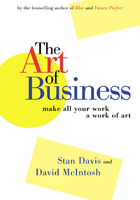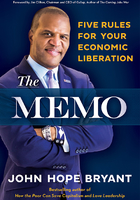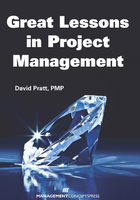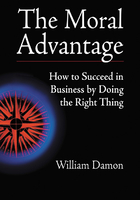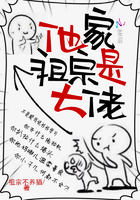To the thousands of community residents and workers it has been my pleasure to serve, and to Beth, Chaco, and Diné for sharing my life's love and labor and this book from cover to cover with me.
I am tired of hard-working families still not being able to make ends meet. I do not believe that people have to be poor.
I do not think I am alone.
I have spent forty years as an organizer doing what I know how to do to help people pull the ends together more tightly. Some days, I think we only have to pull a little harder. Other days, I am not sure the ends will ever join. Somehow, though, rather than becoming completely jaded, I continue to believe that, if they could, a lot of people are like you and me, and would like to do something about the fact that there is way more month than money for most families.
I think the answer is taking the concept of citizen wealth seriously and then working very, very hard to get people to a place where they actually have sufficient citizen wealth. In this book I am going to try and bring you along with me.
By citizen wealth I mean the combination of income and assets that provides a family with a measure of real economic security.
Income includes jobs that pay living wages, the power to organize collectively to secure a higher income and better benefits at work, and the ability to access the full range of income maintenance and supports that have been created by various levels of government. Income at a sufficient level guarantees family survival.
Assets, on the other hand, add a level of security to the complex equation of family survival. Assets include savings, access to credit, and, more often than not, decent and affordable housing, including home ownership.
There is more to both income and assets than this simple list, like good healthcare coverage or access to education and training and therefore opportunity, but even progress along these simple lines begins to create real citizen wealth, and therefore real family security, widening the gap between families and potential poverty by miles rather than millimeters. This is a goal worth the work.
I am not na?ve, nor do I believe that any of you should be. I think there is little point to building citizen wealth if we do not simultaneously protect what we are building from wholesale erosion. That means that we have to make sure that the wealth being acquired is not immediately dissipated by various predatory practices. We cannot forge ahead two steps toward greater family security and then let down our guard and watch people pushed back again because we did not keep in mind that it all can be taken away in a minute by hundreds of schemes devised for just that purpose.
This work means that some things have to be done better in terms of policy and the politics that drive policy, but this is not a book about policy. At least, it is not a book about just policy.
The work, in my view, really means things that we can do as individuals and communities to create the conditions that allow citizen wealth to become a major priority and thus a visible reality. Since I have been an organizer all of my adult life, much of what I argue, not surprisingly, has to do with collective action and organization. Superman may be able to do everything in the comics, but the rest of us need to join together at every level in order to build the power to do something about these issues. Furthermore, this method works, and I will share with you many examples of campaigns that have succeeded in making a difference in building citizen wealth.
All of this is so important. I wish I were sitting next to you right now and we could hash it out together. I just know that if we talked it through, you would be as moved as I am, and would be rip-roaring and ready to act. That is the organizer in me talking. I have a lot of confidence in those skills and in our ability, yours and mine, to come up with a plan and to make it happen. I am pretty clear about the fact that I am a much better organizer than I am a writer, and this worries xi me as we start the journey of this book together. I need you to make it through, even if there are rough and imperfect patches, because, as I have said, this is important, and there are things you and I can and should do.
So, bear with me. For my part, I guarantee it will not be boring. I also guarantee that you will learn some things you did not know before you cracked the cover of this book. I know I did.
The Road Ahead
We need to create citizen wealth and ensure the financial security that allows all families to build better lives and better futures, and here is how I have tried to tackle it in this book.
The Introduction, "From the Bottom Up," makes the case that we need to focus on citizen wealth in face of the mounting economic inequities in our society, and explains why I believe my experience as the founder and chief organizer for ACORN (the Association of Community Organizations for Reform Now) for thirty-eight years has taught me, along with a lot of other things, some lessons that are valuable in building citizen wealth.
Chapter 1, "Building a Winning Campaign for Economic Security," looks at the fact that we often fail to think about wealth and concentrate on just income when we think about economic security. Income is important, but assets are important as well because they often define a family's degree of security. These are the differences that can define why a family confronting job loss can suddenly be pushed within a few months from being solidly middle income to being homeless. It all matters.
Chapter 2, "Home Ownership Through Community Reinvestment," deals with home ownership, since the home has become the single biggest asset for working families in the United States. The centrality of increasing home ownership for families of modest means has only increased since the passage of the Community Reinvestment Act in 1977.
Chapter 3, "Stopping Foreclosures and Predatory Lending," looks at how the predatory practices in the subprime mortgage market have eroded family wealth and jeopardized home ownership. We may think we know this story all too well now, but this chapter looks under the xii hood at the fight to keep home loans flowing to eligible families before the lack of oversight and enforcement drowned many homeowners in foreclosures.
Chapter 4, "Making Work Pay Living Wages," looks at the successful efforts mounted in communities and states throughout the U.S. to increase wages for publicly contracted work and to raise the minimum wage to more adequate levels, despite the lag in the federal minimum wage in recent decades. In this chapter we look at the hard lesson of sometimes putting aside our "dream" goals and focusing realistically on what can win and make a difference.
Chapter 5, "Creating Wealth Through Worker Organizations," takes on an issue that too many people like to avoid. Unions mean much-needed wage and benefit security, yet unions are becoming weaker. In this chapter I argue that we should create more workplace organizations that can enable workers to come together to get the best deals available, and therefore achieve more economic security. Furthermore, in one of the unrecognized success stories of the last thirty years, just such an approach has led to the successful organization of hundreds of thousands of informal workers at the bottom in home health and home day care.
Chapter 6, "Making Earned Income Tax Credits Work for Workers," looks at the Earned Income Tax Credit (EITC), which just about every president and politicians of every stripe claim is the most effective anti-poverty program in the U.S. Despite all of the praise that EITC gets, however, significant numbers of eligible families are not getting EITC benefits, and I argue for an effective campaign to achieve what we call "maximum eligible participation."
Chapter 7, "Guarding Tax Refunds and Combatting High Prices," also takes a look at the dark side of the coin, even as I remain hopeful that the bright side will prevail. This is particularly the case with Refund Anticipation Loans (RALs), which encourage predatory cash advances to desperate families, eroding the very benefits of EITC. I then look at the steps taken by organizations to reform these practices and the great progress being made.
Chapter 8, "The Debt Trap," examines the role of debt in building citizen wealth. Debt of course often undermines citizen wealth, yet people require loans to access educational opportunities and the housing market, and credit cards are a part of our modern economy and xiii can be a form of security for families. We do little in the microfinance area to assist families trying to broaden income opportunities, though, and we need to force established financial institutions to limit credit card abuse and push them to compete with payday lending outfits in providing small loans for low-income families.
Chapter 9, "The 'Maximum Eligible Participation' Solution," argues what I believe should be accepted as a simple truth: if a family is eligible for a benefit, then we need to do everything we can to ensure that that family receives the benefit. We need to finish the jobs that have only been partially done by existing programs at the local, state, and federal level by creating access, doing outreach, and achieving maximum eligible participation.
Part III, "Changing the Terms of the Debate," looks at the ways that both companies and organizations can lead the way to creating citizen wealth by rethinking their markets and constituencies.
Chapter 10, "Working with Corporations to Create an Asset Climate," examines the major steps taken by HSBC to move from being the largest facilitator and financer of RALs to deciding to protect its brand and move out of the market.
Chapter 11, "Business Models That Foster Citizen Wealth," looks at how H&R Block altered its business model to expand wealth for its largely modest-income clientele just as other companies including Wal-Mart and Colonial Penn Insurance had done.
Chapter 12, "Bringing Citizens into the Wealth-Building Process," talks about the potential of bringing diverse partners, from tax preparers (H&R Block) to software firms (Nets to Ladders/N2L) and community-based organizations (ACORN), to work together to create new platforms that combine many programs to achieve greater access and participation.
Chapter 13, "The Future of Citizen Wealth," makes the case that there is a campaign to achieve citizen wealth for working families that needs to be undertaken now and that there is a role for all of us in winning this battle.
As I promised, this will not be boring!
Wade Rathke
New Orleans
March 2009

